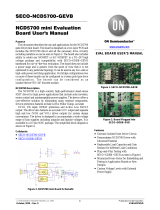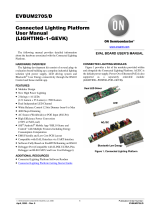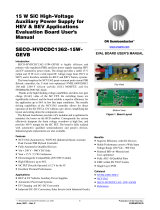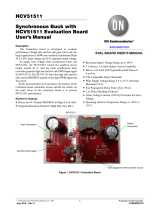Demo Kit Quick-Start Guide
Trouble Shooting
Page 12 of 15
DevSuite Quick-Start Guide – Rev. 65 onsemi reserves the right to change products or specifications without notice.
© 2021 onsemi All rights reserved.
‡Products and specifications discussed herein are for evaluation and reference purposes only and are subject to change by onsemi
without notice. Products are only warranted by onsemi to meet onsemi’s production data sheet specifications.
Trouble Shooting
• DevWareX fails to start up.
- Install Python as described in section “Additional Product Software Installers”.
- Found mostly in cases when the Python Anaconda package is installed.
• Applications warn of a missing entry point.
- Ensure all SW installers are at the same version as DevWareX.
• “Camera not found”
- If a Demo3 baseboard is attached and this error appears, there are 2 possible causes.
- USB3 driver start-up; simple disconnect and reconnect the USB3 cable and retry.
- Outdated USB3 FW drivers on the PC. If this is first time you’ve installed DevWare and/or the first time
you’ve attached a Demo3, it is possible you need to update the USB3 FW driver on your PC.
Do a Web search of “<Your PC manufacturer> <Your PC Model> USB3 FW driver update”.
Find a search result that either matches your PC or one for “Intel” (most common USB3 chipset).
- Windows10; driver certification has not yet been disabled – see Appendix A.
• Demo3 won’t stream data or stops streaming data
- Ensure that you are connected to a USB3 port on your PC. This can be identified as either having a blue
connector, or with a label of “SS” (for Super Speed). Some USB2 port implementations are not backward
compatible to USB3.
• “Unable to identify attached device”.
- Read the “Read-Me-First.doc” from the installation package to ensure that all required files have been
installed.
- Ensure that the installation package name is matched to the sensor.
- Another possible cause is non-working Hardware; if you already have the required SDAT file, then do the
following;
- Start DevWare and when the warning dialog appears select “No”.
- When the “Startup Choices” dialog appears, select “Sensor…” and select the SDAT that matches your
sensor.
- When the “Startup Wizard” dialog appears, unselect all check-boxes and select “Finish”.
- In the “Registers” dialog, select any page; if the values are all zero, then you have non-working Hardware.
• Image won’t display / DevWare exits before displaying an image.
- Outdated Graphics display drivers on the PC. If this is first time you’ve installed DevWare and/or the first time
you’ve attached a Demo3, it is possible you need to update the Graphics driver on your PC.
Do a Web search of “<Your PC manufacturer> <Your PC Model> Graphics driver update”.
Also, if samples\SimpleQT shows an image, then check for other graphics-based libraries installed on your PC.
• Windows 7: the USB driver can’t be found, or device not recognized.
- Run the “Hardware Update Tool” to ensure the correct version of FW is installed; see “USB Driver User Guide”
for details. Accessed via: Start->All Programs->Aptina Imaging->Docs->User Guides
• The Frame Rate is very low.
- The amount of data being processed is quite significant for large display sizes, especially on larger sensors.
Lower the size of the displayed image.
- Ensure that the HW and SW requirements as defined in Appendix A are met.























